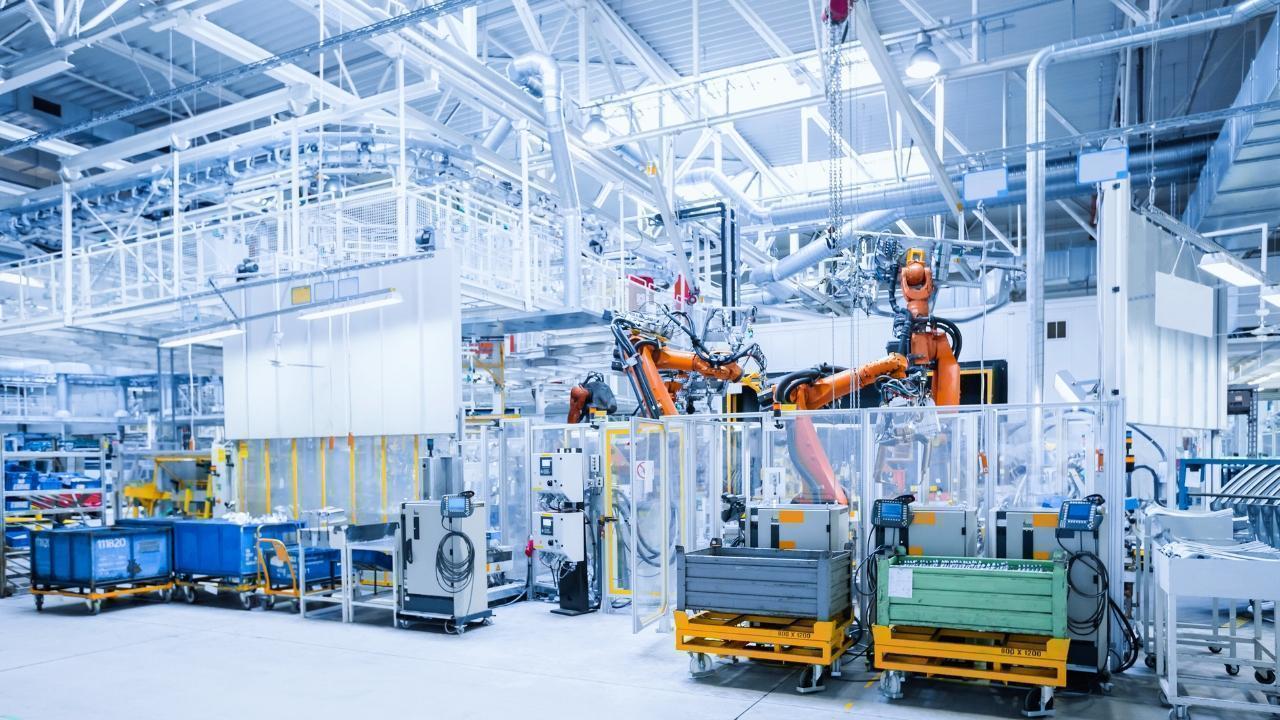You have not yet added any article to your bookmarks!

Join 10k+ people to get notified about new posts, news and tips.
Do not worry we don't spam!

Post by : Anis Farhan
Over the past decade, Vietnam has quietly transformed itself into a cornerstone of global electronics manufacturing. In 2025, this shift is no longer subtle. With major tech multinationals ramping up investments and supply chains being restructured in response to U.S.-China tensions, Vietnam has stepped firmly into the spotlight as a reliable, cost-effective, and strategically located production base.
The country's exports of electronics and electrical components surged by 18.9% year-on-year in the first half of 2025, driven by sustained foreign direct investment and robust domestic capacity-building. From mobile phones and semiconductors to consumer electronics and wearable tech, Vietnam is now producing some of the world’s most in-demand hardware. This rise is not just a matter of scale—it reflects deep structural change in how and where global technology is made.
The global electronics industry has long relied on China for its unparalleled manufacturing ecosystem. But rising labor costs, regulatory uncertainties, and geopolitical friction—particularly between Washington and Beijing—have prompted firms to diversify. The “China+1” strategy, once a buzzword, has now become standard operating procedure.
Vietnam, with its proximity to China, investor-friendly policies, and participation in major trade agreements like the CPTPP and RCEP, has emerged as a natural choice. Companies that once concentrated assembly and component sourcing in Shenzhen or Guangzhou are now building parallel operations in Bắc Ninh, Ho Chi Minh City, and Đà Nẵng.
Apple, for example, expanded its supplier footprint in Vietnam significantly between 2023 and 2025, shifting parts of its AirPods and iPad production to local facilities. Samsung, which already had a major presence, announced a $3.2 billion upgrade to its semiconductor testing and packaging plant in Thái Nguyên this year. Meanwhile, Google and Dell have begun sourcing more components for their devices from Vietnamese vendors.
One of Vietnam’s key competitive advantages lies in its labor market. The country boasts a young, educated workforce with growing technical skills and a willingness to adapt to advanced manufacturing needs. Vocational training centers have sprouted across key industrial zones, often in partnership with foreign firms and NGOs. These programs focus on robotics, assembly automation, quality control, and microelectronics—all tailored to the specific needs of incoming investors.
While average wages in Vietnam have risen, they remain significantly lower than in China, making the country attractive for labor-intensive production. At the same time, local firms are beginning to climb the value chain. Vietnamese manufacturers are no longer limited to low-tech assembly lines; some now produce precision parts and embedded systems for global use.
That said, challenges remain. Language barriers, infrastructure bottlenecks, and limited R&D capacity are areas that Vietnam must address if it aims to evolve from a contract manufacturer into a full-fledged innovation hub.
To facilitate this transition, the Vietnamese government has launched a series of policy and infrastructure initiatives. The National Digital Transformation Roadmap 2025 includes targeted support for tech manufacturers, while the Ministry of Industry and Trade is streamlining land approvals and export incentives for high-tech zones.
Special Economic Zones (SEZs) like Saigon Hi-Tech Park and Hoa Lac Hi-Tech Park offer tax breaks, land leases, and logistics support to electronics companies. In 2025, new logistics corridors connecting the northern industrial cluster to Hai Phong port were inaugurated, slashing cargo transit time and easing supply chain pressure.
Additionally, Vietnam’s data protection law, implemented earlier this year, aligns closely with international standards, boosting investor confidence in local tech operations. These policy moves reflect a growing recognition that electronics is no longer a niche sector—it is now the backbone of Vietnam’s export-led growth.
While foreign giants dominate headlines, Vietnam’s local electronics ecosystem is also maturing. Companies like Vingroup and FPT are making inroads into both manufacturing and design. Vingroup’s VinES recently began producing lithium-ion battery modules for export, while FPT Semiconductor unveiled its first domestically designed microcontroller earlier this year.
These developments are not just symbolic—they point to a gradual shift from foreign-dominated assembly to homegrown capacity in design, testing, and engineering. The government is actively supporting such efforts through R&D grants, public-private partnerships, and international collaboration programs.
Moreover, collaboration between Vietnamese startups and foreign firms is leading to new ventures in automation, AI-enhanced quality control systems, and green manufacturing practices. This ecosystem approach bodes well for the sector’s long-term sustainability.
Despite the momentum, Vietnam must navigate a complex landscape. Global competition is intensifying, with countries like India, Mexico, and Indonesia also vying for the same supply chain realignments. The geopolitical tightrope between the U.S. and China adds another layer of complexity. Vietnam has thus far managed to remain neutral and open, but sustained diplomacy will be needed to maintain that balance.
Environmental concerns are also gaining traction. As electronics manufacturing expands, so do questions about e-waste, energy consumption, and water use. Vietnam’s pledge to achieve net-zero emissions by 2050 will require the electronics industry to adopt cleaner practices, including circular economy models and renewable energy sourcing.
Still, the fundamentals remain strong. With a clear policy direction, continued infrastructure investment, and growing domestic capability, Vietnam is poised to become not just Asia’s factory, but a credible global tech partner.
This article is intended for informational purposes only. It does not constitute investment, business, or policy advice. Readers are encouraged to seek expert consultation before making strategic decisions related to manufacturing or foreign investment.










Akshaye Khanna exits Drishyam 3; Jaideep Ahlawat steps in fast
Producer confirms Jaideep Ahlawat replaces Akshaye Khanna in Drishyam 3 after actor’s sudden exit ov

Kapil Sharma’s Kis Kisko Pyaar Karoon 2 to Re-release in January 2026
After limited screens affected its run, Kapil Sharma’s comedy film Kis Kisko Pyaar Karoon 2 will ret

Hrithik Roshan and Saba Azad Celebrate Christmas at Family Party
Hrithik Roshan and Saba Azad celebrated Christmas at Sussanne Khan’s party, sharing happy moments wi

China Sanctions 20 US Defense Firms Over Taiwan Arms Sales Dispute
China imposes sanctions on 20 US defense companies and 10 executives for supplying arms to Taiwan, e

Salman Khan’s Grand 60th Birthday Bash at Panvel Farmhouse Shines Bright
Salman Khan celebrates his 60th birthday with a grand party at Panvel farmhouse, sharing joyful mome

Thailand Defence Minister Joins Talks to End Deadly Border Clash
Thailand’s defence chief will join talks with Cambodia as border clashes stretch into a third week,